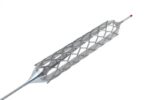Original title: New-generation drug-eluting stents reduce stent thrombosis and myocardial infarction: a propensity-score-adjusted analysis from the multicenter REAL registry. Reference: Vignali L et al. Cath Cardiovasc Interv. 2014; Epub ahead of print. Compared to the first generation of drug eluting stents (DES), the new generation has a lower long term risk of in-stent thrombosis and acute myocardial infarction<a href="https://solaci.org/en/2014/10/30/lower-rates-of-in-stent-thrombosis-with-the-new-generation-des/" title="Read more" >...</a>
PCI Superior to Optimal Medical Treatment in Patients with Ischemic Cardiomyopathy
Original title: Fractional Flow Reserve–Guided PCI for Stable Coronary Artery Disease. The FAME 2 Trial Investigators. Reference: Bernard De Bruyne et al. N Engl J Med 2014;371:1208-17. The FAME 2 and the COURAGE studies tested similar hypothesis, only in the first study PCI was guided by fractional flow reserve (FFR) in addition to an angiography. The study hypothesis<a href="https://solaci.org/en/2014/10/29/pci-superior-to-optimal-medical-treatment-in-patients-with-ischemic-cardiomyopathy/" title="Read more" >...</a>
Less Definite Thrombosis with Everolimus Eluting Stents
Original title: Three-Year Outcomes After Revascularization With Everolimus-and Sirulimus -Eluting Stents From the SORT OUT IV Trial. Reference: Lisette Okkels Jensen et al. J Am CollCardiolIntv, 2014;7: 840-8. Drug eluting stents (DES) have been shown to safely and effectively reduce restenosis compared to bare-metal stents. While the risk of thrombosis remains a matter of concern when it comes<a href="https://solaci.org/en/2014/08/29/less-definite-thrombosis-with-everolimus-eluting-stents/" title="Read more" >...</a>
Direct Implantation of Drug Eluting Stents does not reduce restenosis
Original: Direct drug-eluting Stenting to reduce stent reestenosis (STRESSED). Reference: Wouter S. Remkes et al. J Am Coll Cardiol Intv, 2014;7: 751-8. Direct stenting, without predilation, has been considered a safe and effective technique that reduces procedural time, radiation exposure, contrast material and costs; however, the pertinent studies tested conventional stents only. This study aimed at assessing whether<a href="https://solaci.org/en/2014/08/26/direct-implantation-of-drug-eluting-stents-does-not-reduce-restenosis/" title="Read more" >...</a>
Less Bleeding at the Expense of a Higher Risk of Acute Thrombosis with Bivalirudin
Original title: Bivalirudin versus heparin in patients treated with percutaneous coronary Intervention: a meta-analysis of randomised trials. Reference: Salvatore Cassese et al. EuroIntervention 2014;10-online publish-ahead-of-print August 2014. Current recommendations for the use of bivalirudin in PCI patients are mostly based on studies comparing bivalirudin vs. heparin combined with glycoprotein IIb/IIIa inhibitors. Whether bivalirudin is superior to heparin alone<a href="https://solaci.org/en/2014/08/20/less-bleeding-at-the-expense-of-a-higher-risk-of-acute-thrombosis-with-bivalirudin/" title="Read more" >...</a>
Percutaneous Coronary Intervention to Unprotected Left Main Stem In Different Coronary Syndromes
Original title: Comparative Outcomes After Unprotected Left Main Stem Percutaneous Coronary Intervention: A National Linked Cohort Study of 5,065 Acute and Elective Cases From the BCIS Registry (British Cardiovascular Intervention Society). Reference: Sami S. Almudarra, et al. JACC Cardiovasc Interv 2014;7:717-30 Although myocardial revascularization surgery has long been the gold standard treatment for left main lesions, PCI has<a href="https://solaci.org/en/2014/08/13/percutaneous-coronary-intervention-to-unprotected-left-main-stem-in-different-coronary-syndromes/" title="Read more" >...</a>
Thrombosis with bioresorbable scaffolds: the story of DES all over again?
Original title: Percutaneous coronary intervention with everolimus-eluting bioresorbable vascular scaffolds in routine clinical practice: early and midterm outcomes from the European multicentre GHOST-EU registry. Reference: Capodanno D et al. EuroIntervention. 2014 Jul 18. Epub ahead of print The GHOST-EU registry, that included 1189 patients from 10 European centers between 2011 and 2014, is now the largest registry<a href="https://solaci.org/en/2014/07/30/thrombosis-with-bioresorbable-scaffolds-the-story-of-des-all-over-again/" title="Read more" >...</a>
Benefits at 5 years of routine invasive strategy in Non-ST-Elevation Acute Coronary Syndromes
Original title: Impact of an invasive strategy on five years outcomein men and women with Non-ST-Elevation Acute Coronary Syndromes. Reference: Joakim Alfredsson et al. Am Heart J. 2014;Epub ahead of print. This meta-analysis included patients with non-ST-elevation acute coronary syndrome (NSTE ACS) from randomized studies FRISC II, ICTUS and RITA 3 and compared the routine invasive strategy<a href="https://solaci.org/en/2014/07/29/benefits-at-5-years-of-routine-invasive-strategy-in-non-st-elevation-acute-coronary-syndromes/" title="Read more" >...</a>
Superficial Femoral Artery In-Stent Restenosis with Drug Eluting Balloon: 2 Year Follow Up.
Original title: Drug-Eluting Balloons for the Treatment of the Superficial Femoral Artery In-Stent Restenosis. 2-Year Follow-Up. Reference: Vittorio Virga et al. J Am Coll Cardiol Intv 2014;7:411–5. Although the use of the self-expanding nitinol stent has improved angioplasty outcomes in femoropopliteal territory, restenosis remains a challenge still affecting at least 25% of the population in the first year.<a href="https://solaci.org/en/2014/07/08/superficial-femoral-artery-in-stent-restenosis-with-drug-eluting-balloon-2-year-follow-up/" title="Read more" >...</a>
SYNTAX study final monitoring at 5-years
Original title: Coronary artery bypass grafting vs. percutaneous coronary intervention for patients with three-vessel disease: final five-year follow-up of the SYNTAX trial. Reference: Eur Heart J. 2014 May 21. pii: ehu213. (Epub ahead of print). The SYNTAX study was one of the largest randomized clinical studies comparing long-term results of angioplasty versus surgery in multivessel disease and /or<a href="https://solaci.org/en/2014/07/04/syntax-study-final-monitoring-at-5-years/" title="Read more" >...</a>









